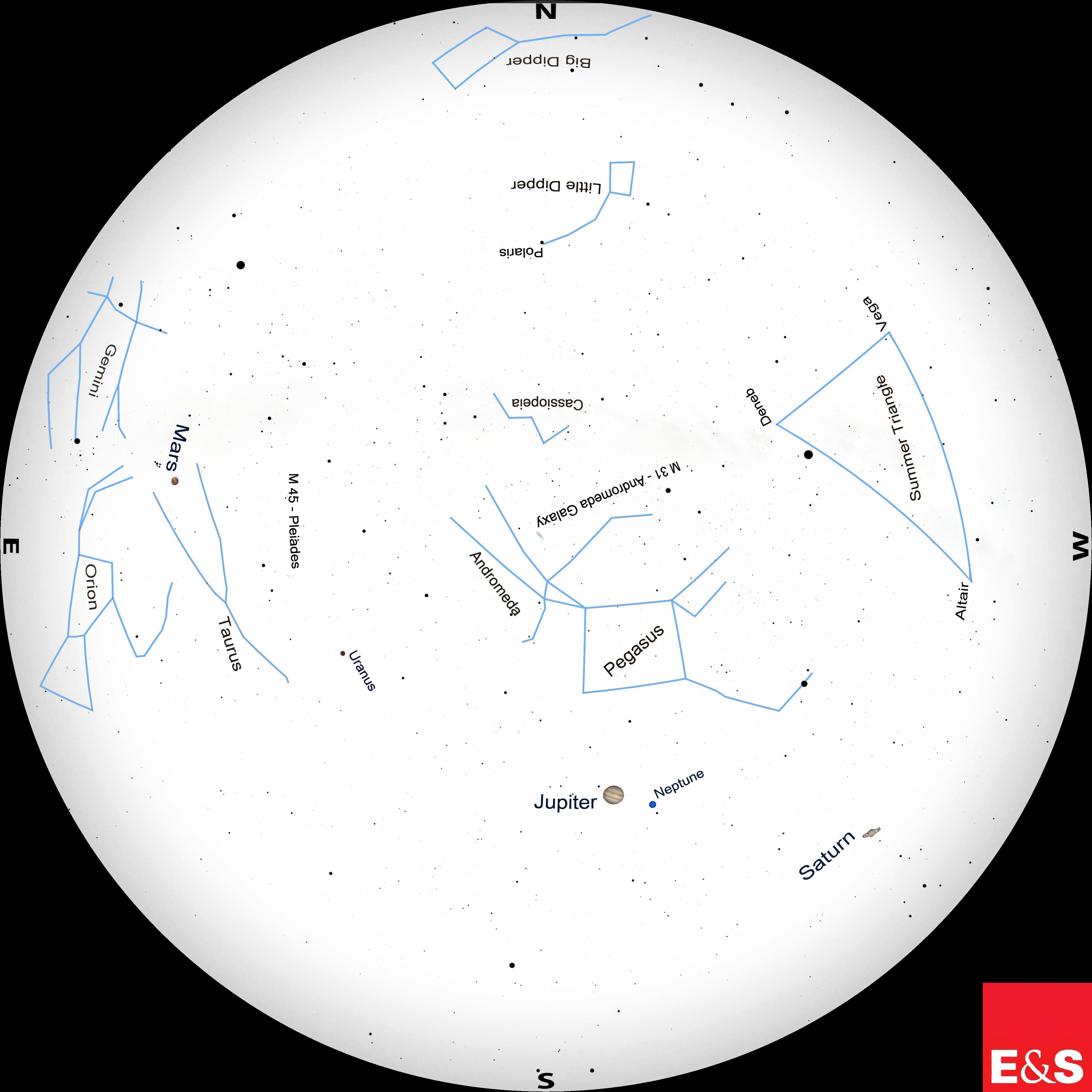It all starts November 1 when the first quarter Moon appears near Saturn. Our nearest neighbor and the ringed giant will be so close that you can spot them both through a pair of binoculars. Join us in the observatory from 7 - 8:30 pm for your chance to view them.
By November 4, the waxing gibbous Moon will have moved next to Jupiter. Jupiter and the Moon will be only 3 degrees apart and visible together through binoculars.
Set your alarms for an early rise on November 8 to see the "blood moon" total lunar eclipse. The term blood moon is not an official term in astronomy. It comes from the reddish-orange color the Moon turns as it enters Earth's umbral shadow. Sunlight can pass through Earth's atmosphere but gets scattered and bent due to all the dust and water vapor in our air. This bending changes the light's color from yellow/white to a bloody orange/red color that gets reflected on the Moon during a total eclipse.
Unlike solar eclipses, lunar eclipses are always safe to watch and don't require special equipment, but telescopes and binoculars can enhance the view. The Moon will enter Earth's fainter penumbral shadow around 3 am. Just after 4 am, the Moon will enter the darker umbral shadow. At 5:15 am, the Moon will be fully eclipsed. The total eclipse will end at 6:41 am and set shortly after at 6:44 am. The Moon will be close to the horizon during totality, so ensure you have a clear view of the horizon in the west-northwest.
Early November also marks the best time to view Uranus as it reaches opposition on November 9. Uranus is too faint to see with our unaided eyes but appears as a light blue disc in small telescopes.
Keep your binoculars handy because the Moon and Mars will share the same field of view on November 10.

After chowing down on your Thanksgiving meal, grab your telescope to watch as the small moon Io passes in front of Jupiter on November 24. A dark shadow from the moon will be visible, passing above the clouds of Jupiter from 7:45 until 9:54 pm.
On November 30, the Moon will return to the first quarter phase, allowing us to offer two observatory open houses in the same calendar month (weather permitting)! This time, when we're observing the Moon, we'll try to spot the faint asteroid Juno just below it through our telescopes.
No matter when you head outside to gaze at the stars, we wish you clear skies!